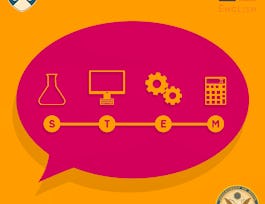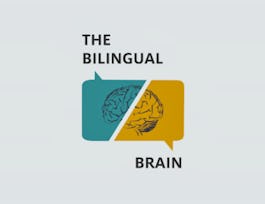Build your knowledge of Indo-European languages, how they changed through time, and how to reconstruct ancient languages. Every language belongs to a language family; a group of languages that are genetically related to each other. Indo-European is the name of the language family to which English belongs, along with many sub-families such as Germanic languages and Romance languages.



Introduction to Comparative Indo-European Linguistics

Instructor: Tijmen Pronk
Sponsored by BIDAcademy
13,654 already enrolled
(91 reviews)
Recommended experience
What you'll learn
Investigate the evolution of words and sounds in Indo-European languages
Explain how Indo-European languages are related to each other
Discuss the interplay between linguistics, archaeology and genetics
Explore the oldest written sources of Indo-European languages
Skills you'll gain
Details to know

Add to your LinkedIn profile
33 assignments
See how employees at top companies are mastering in-demand skills


Earn a career certificate
Add this credential to your LinkedIn profile, resume, or CV
Share it on social media and in your performance review

There are 8 modules in this course
This week we will introduce the Indo-European language family. We will explain what a language family is and how the Indo-European language family was discovered. We will also provide you with an overview of the languages that belong to the Indo-European family.
What's included
3 videos4 readings2 assignments1 discussion prompt2 plugins
During this course, you will not only learn about the oldest languages belonging to the Indo-European language family, but also about linguistic reconstruction. This week starts with an overview of the basic linguistic concepts that you will need to understand when taking this course. If these are new to you, it may be a good idea to print them or write or them down so that you can consult them later on during the course if necessary. After this short introduction to linguistics, you will learn how you can tell whether two languages are related to each other and how language changes.
What's included
2 videos9 readings4 assignments
Ancient Greek and Sanskrit are among the most important languages for the reconstruction of Proto-Indo-European. We will therefore start our journey through the Indo-European language family with these two languages. This week you will learn about the oldest texts in the Ancient Greek and Sanskrit languages. You will also learn about the importance of oral traditions in the history of these texts. We will take the first steps towards reconstructing Proto-Indo-European by studying the vowels of Greek and Sanskrit. We will end this lesson by introducing the concept of Ablaut.
What's included
8 videos11 readings4 assignments1 discussion prompt1 plugin
You now know about the oldest Ancient Greek and Sanskrit texts. You also understand how to reconstruct Proto-Indo-European vowels by comparing Greek words to Sanskrit words. This week we will take a look at the oldest Iranian languages: Avestan and Old Persian. You will also expand your knowledge of the evolution of Indo-European vowels when we introduce two sound laws that affected Indic and Iranian languages. At the end of this week's lesson, we will introduce another branch of Indo-European: Armenian.
What's included
4 videos6 readings5 assignments1 discussion prompt
You are now familiar with the oldest texts in the Greek and Indo-Iranian languages and are able to reconstruct Proto-Indo-European vowels and diphthongs. You understand a number of Indo-Iranian sound laws: Bruggmann's law, Grassmann's law and the palatalization of velars. This week you will learn about three additional branches of Indo-European: Baltic, Slavic and Italic. We will introduce you to the oldest texts in these languages. You will also learn how to reconstruct some Proto-Indo-European consonants: the so-called palatovelars. Finally, we will explain the concept of relative chronology in historical linguistics. Each lesson, you are also learning new linguistic terms. If you come across a technical term of which you don't remember the meaning, you can always consult the overview of linguistic terminology that can be found at the end of lesson 2.
What's included
4 videos12 readings4 assignments1 discussion prompt
So far, you have learned about six branches of Indo-European, including Baltic, Slavic and Italic. You know what satem- and centum-languages are and are able to reconstruct Proto-Indo-European palatovelar consonants. This week is about the Celtic and Germanic languages. You will learn about the oldest texts in various Celtic and Germanic languages. You will also learn that these are centum languages. We will introduce a new set of Proto-Indo-European consonants: the so-called labiovelars. Finally, we will explain how the Proto-Indo-European consonants evolved in the Germanic languages.
What's included
6 videos16 readings6 assignments
Last week we discussed the Celtic and Germanic languages and the way their consonants evolved. You now know what Grimm's and Verner's laws are and you are able to reconstruct Proto-Indo-European labiovelar consonants. This week you will learn about the most recent addition to the Proto-Indo-European language family: Anatolian and Tocharian. As usual, we will tell you about the oldest texts in these languages. You will also find out what their place in the Indo-European language family is and how you can set up a language family tree. Finally, you will learn about perhaps the most difficult part of the Proto-Indo-European sound system: the so-called laryngeals.
What's included
5 videos9 readings5 assignments2 discussion prompts
You now know which old sources are used when Indo-European languages are compared to each other. You also know which sounds are reconstructed for Proto-Indo-European and you have the skills to do this yourself. This is the final week of the course. You will learn about Indo-European society and culture: who were the people who spoke Proto-Indo-European? How did they live? What is know about their religion and about the oral texts that they used?
What's included
5 videos11 readings3 assignments2 discussion prompts
Instructor

Offered by
Why people choose Coursera for their career




Learner reviews
91 reviews
- 5 stars
76.92%
- 4 stars
14.28%
- 3 stars
3.29%
- 2 stars
4.39%
- 1 star
1.09%
Showing 3 of 91
Reviewed on Nov 5, 2022
Very interesting course, with important information for general culture of a language teacher.
Reviewed on Feb 12, 2023
The course was well done and very engaging. There was a wealth of information, the presenters were great, and overall I found the topic fascinating.
Reviewed on Jul 7, 2023
The course reached my interest about the subject. It is not an easy theme, but it was very well teached.
Recommended if you're interested in Language Learning

University of Pennsylvania

University of Houston

University of Maryland, College Park

University of California, Irvine

Open new doors with Coursera Plus
Unlimited access to 10,000+ world-class courses, hands-on projects, and job-ready certificate programs - all included in your subscription
Advance your career with an online degree
Earn a degree from world-class universities - 100% online
Join over 3,400 global companies that choose Coursera for Business
Upskill your employees to excel in the digital economy


